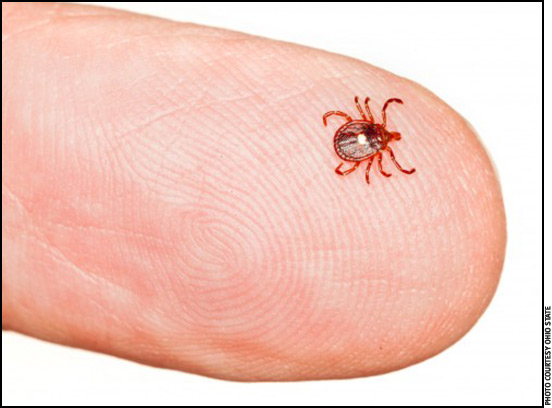
Certain Tick Bites
Can Cause Food Allergies
Recent study shows odd side effect of specific tick bite.
Can you really develop an allergy to red meat from a tick bite?
That depends. In certain cases, with a certain tick, in some people and in some states — yes.
According to a recent article about a study on lone star ticks and allergies that was published in the Journal of the American Medical Association (JAMA), some people who have been bitten by a lone star tick have gone on to develop an allergy to eating red meat and, in some cases, dairy.
The study, done by researchers with the National Institute of Allergy and Infectious Diseases, found that, in rare cases, some people have developed life-threatening allergic reactions to red meat after being bitten by a lone star tick.
The study attributes the allergic reaction to galactose-alpha-1,3-galactose (alpha-gal), which is a type of sugar that animals make in their bodies. As a result, it’s found in red meats, including beef, pork and lamb, the exception being primates.
According to published reports, humans don’t have alpha-gal, but have an immune response to it. Symptoms of the allergy can include itching, swelling, abdominal cramps, and in some people, anaphylaxis, which is a life-threatening allergic reaction.
While the association between lone star tick bites and the allergy are clear, more research is needed to understand why these alpha-gal allergies develop in some people and not in others, according to the JAMA report.
The timing of the study is significant, however, considering that the tick season — April though September — is expected to be tough this year, according to Glen Needham, a retired entomologist and tick expert formerly with Ohio State University Extension.
There are several tick pest species, including American dog ticks, blacklegged ticks and lone star ticks, all of which can pose a threat to humans because of the diseases they can transmit.
To prevent tick bites in areas where they may be active, Needham recommends that you should:
- Wear light-colored clothes including long-sleeve shirts tucked into your pants and long pants tucked into your socks or boots.
- Apply a tick repellent according to label instructions.
- Do frequent tick checks of your body while outside and a thorough inspection at shower time.
- Protect your pets with an anti-tick product recommended by a veterinarian.
- Keep dogs on a leash and avoid weedy areas.
If you find a tick attached, do not crush or puncture it. Instead, use your pointy tweezers, tick removal tool or protected thumb and finger to carefully remove the tick by pulling it straight up with steady even pressure, Needham said.
“Folk methods, such as using oil to smother the tick or using a flame to burn the tick, do not work, may be dangerous and delay removal,” he said. “You should wash your hands and the tick-bite site with warm soapy water and keep the specimen in a container of rubbing alcohol or hand sanitizer to take it with you to a healthcare professional if you develop any health-related symptoms or rashes.”

Editor’s Note: Tracy Turner is the technical editor for the Ohio State University College of Food, Agricultural and Environmental Sciences. This column was reviewed by Glen Needham, a retired entomologist and tick expert formerly with Ohio State University Extension.






